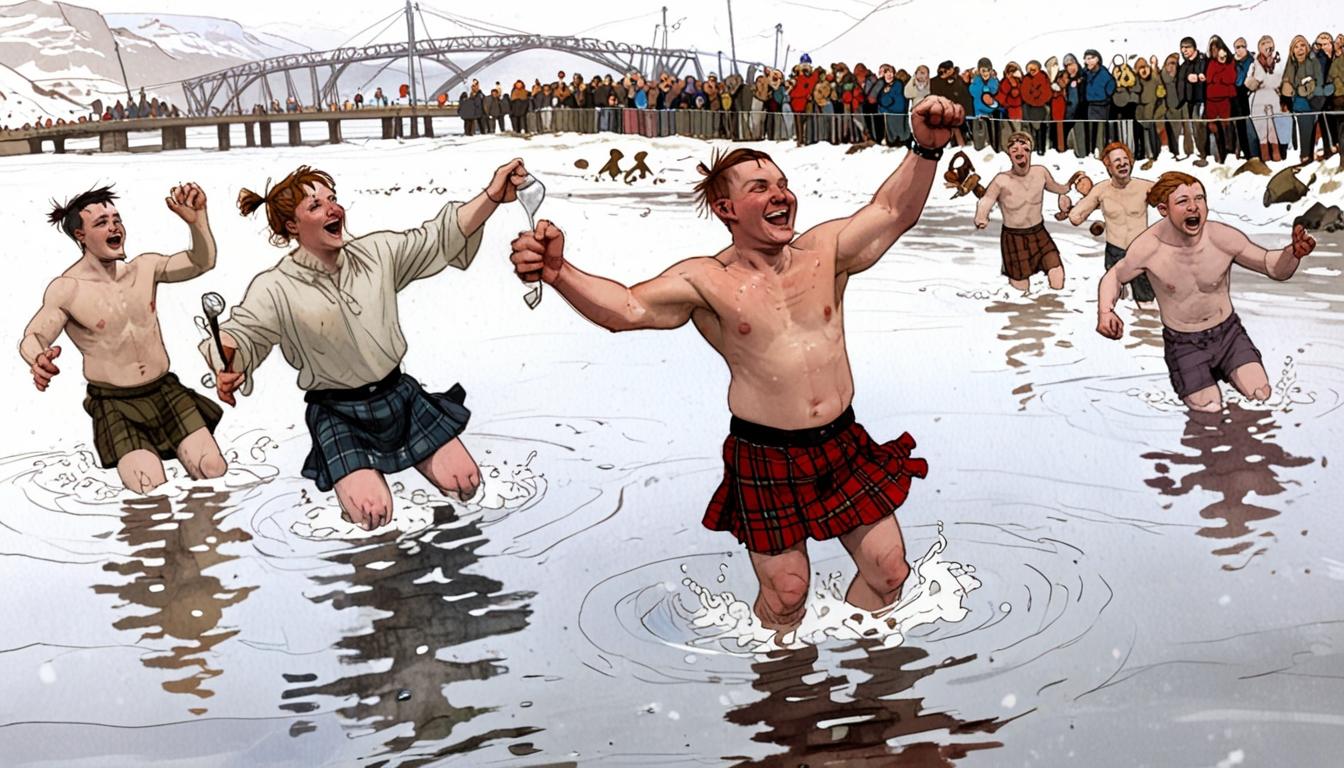In a move to celebrate the unique cultural heritage of Scotland, the UK government is compiling a list of potential candidates for inclusion in UNESCO's Inventory of Living Heritage. This initiative aims to identify various aspects of Scottish culture, ranging from traditional customs to more modern phenomena, all of which play a significant role in defining what it means to be Scottish.
Among the cultural practices being considered are the roll and square sausage, popularised by its specific use of language, and the exuberant Ne’erday Loony Dook, an event where New Year's revellers plunge into the icy waters of the Firth of Forth at South Queensferry. Both these customs, alongside others like the Slosh dance—revived by Jack and Victor from the television series "Still Game"—highlight the diverse cultural tapestry of Scotland.
According to ministerial guidance from the UK Government’s Department for Culture, Media and Sport, the endeavour stems from the UK's ratification of UNESCO's Convention for the Safeguarding of Intangible Cultural Heritage. This global initiative aims to catalogue cultural elements that embody the spirit of nations, focusing on areas like art, literature, social customs, and culinary practices.
Several unique Scottish traditions have already been nominated, including the Scottish wedding scramble, where children compete to collect coins tossed into the air, and Shetland's Up Helly Aa festival, which is characterised by fire and Viking heritage. Other examples that may be included are haggis hurling, which has been a popular Highland Games event, and more whimsical customs such as 'blackenings', where engaged couples are playfully covered in a mix of substances prior to their weddings.
Scottish Secretary Ian Murray highlighted the importance of this initiative by stating, “This is a chance for community groups across Scotland to really have some fun and think about how we celebrate being Scottish through our food, culture, practices and celebrations.” Murray encouraged community involvement, emphasising a desire to capture both traditional practices and contemporary cultural expressions that reflect modern Scottish life.
The objective also includes gathering input on aspects of Scottish culture that may not be widely known or considered conventional. This could entail nominations for musical traditions, storytelling practices, and local culinary delights such as whisky and shortbread. The inclusion of such diverse elements aligns with the goal of celebrating Scots’ sense of humour, uniqueness, and national pride.
The formal call for submissions will open later this summer, with the Scottish Office working alongside the Department for Culture, Media and Sport to facilitate the nomination process. Communities practicing living heritage, as well as groups embracing traditions introduced by immigrant communities, will be encouraged to contribute their cultural practices.
UNESCO currently recognizes a range of world heritage sites in Scotland, including the Antonine Wall, New Lanark, and the historic settings of Edinburgh’s Old and New Towns. The addition of intangible cultural elements will further enrich Scotland’s representation within the UNESCO framework, showcasing a multifaceted view of its heritage.
Source: Noah Wire Services
